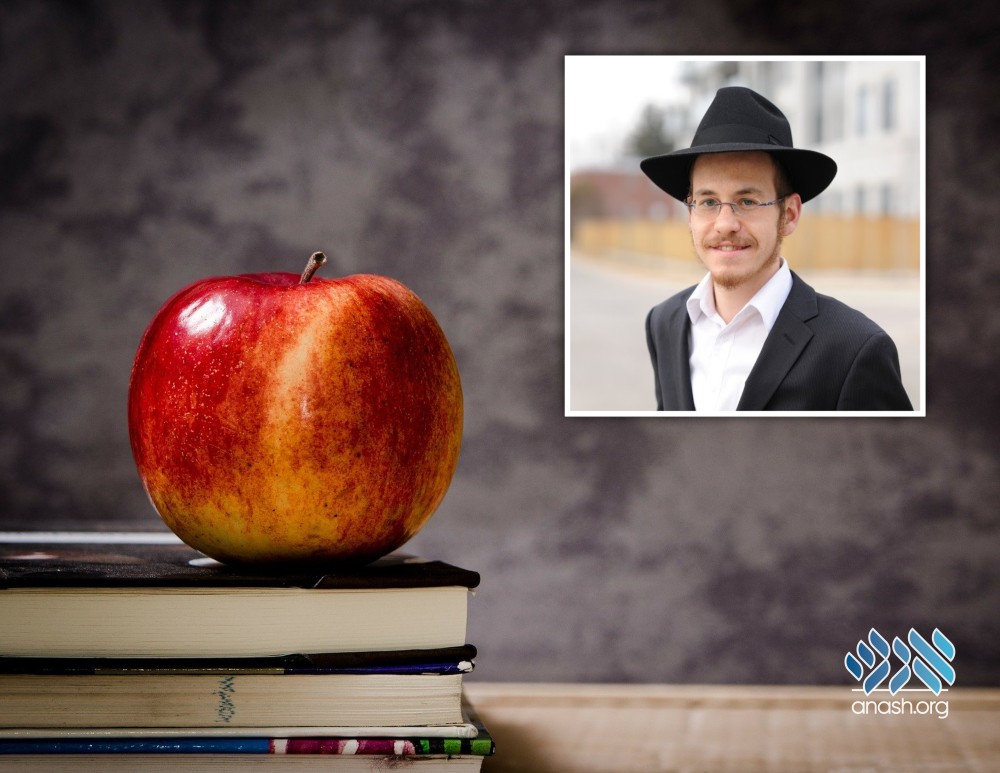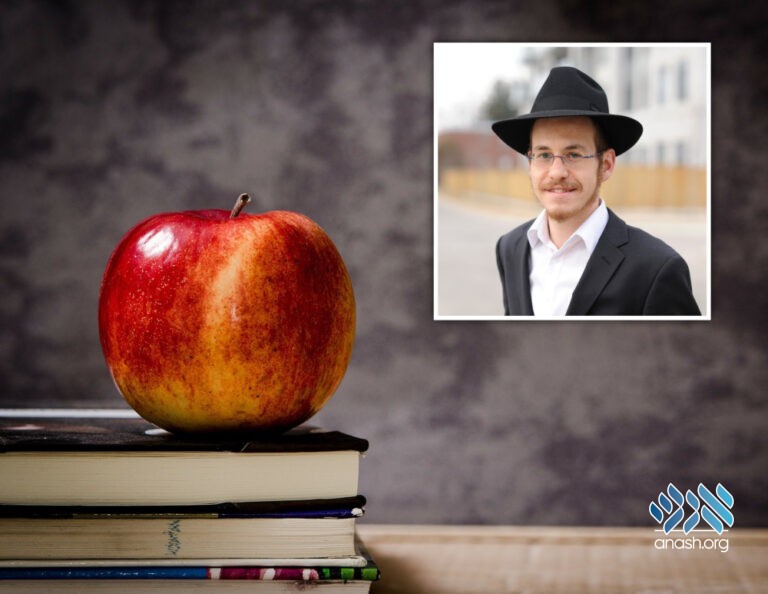י״ג סיון ה׳תשפ״א | May 23, 2021
Is It About the Teacher or About the Child?
Article by Rabbi Shmuel Wagner, teacher in ULY Ocean Parkway. What is your response when your child repeats yet the same Dvar Torah, or asks that oh-too-familiar question?

Article by Rabbi Shmuel Wagner, teacher in ULY Ocean Parkway. What is your response when your child repeats yet the same Dvar Torah, or asks that oh-too-familiar question?
By Rabbi Shmuel Wagner – teacher in ULY Ocean Parkway
How was your Shavuos? Did you enjoy the cheesecake and blintzes? Did you make it on time for the Aseres Hadibros? How far did you get in Tikkun?
Oh, and how many times did you hear a Dvar Torah that mentioned “Dirah B’tachtonim” and “the whole point of Matan Torah…”?
Rewinding a bit, I would be very curious if anyone ever counted how many times they have heard the same Divrei Torah repeated at their Pesach Seder. We all know the scene: You just finished reading the “Arba Bonim” and your eight-year-old gets up and reads from his class-made Haggada. “Question: Why do we put the Rasha next to the Chacham? Answer: So that the Chacham should be able to (child now brings the paper up closer, squints, and reads slowly) in-flu-ence the Rasha”.
Or, you are in middle of “Dayeinu” and your ten-year-old jumps up, “Tatty, I have a Dvar Torah!!” You say, “Nu, Uh!” (Because Minhag Chabad is not to interrupt in middle of Dayeinus. Sheesh, why don’t they ever remember that?!) He impatiently waits for you to finish, and then takes off with his mind-blowing Kashyo: “How could we say that if we would have only got to Har Sinai but not received the Torah it would be ‘Dayeinu’?!?! The answer is (at this point you are mouthing along with your child), at Har Sinai the Yidden had such Achdus, and just for that it would be worth it!!”
While he is eagerly looking around the room for affirmation, your fourteen-year-old rolls his eyes and sarcastically says, “Wow, I never heard that one before…”. You shoot him “the look” to be quiet, but honestly, you were thinking the same thing…
Lots of things in Judaism seem to be repeated. Nothing says that more than the Parsha we just read this Shabbos, Parshas Naso. It is the longest Parsha, with 176 Pesukim, but it is mostly repetitive: Each of the 12 Nesi’im brought Korbanos on behalf of their Shevatim to inaugurate the newly built Mishkan, and the Torah uses six Pesukim per Nasi to tell us what their Karbanos were. Thing is, they are all the exact same Karbanos, described in the Torah with the exact same words.
Seemingly, the Torah could have just told us what Nachshon Ben Aminadav brought on the first day on behalf of Shevet Yehuda and could have then saved 65 Pesukim with one Pasuk, “As Nachshon Ben Aminadav brought, so too did all the Nesi’im bring”, or something like that! Why does the Torah – which never writes an extra letter – repeat, and repeat, and repeat, and… (you get it)?!
As a teacher I experience this all the time in class. When a student asks a question that happens to be the Gemara’s/Rashi’s/the Rebbe’s question, there are two modes of response. The first one is the more reflexive one: “Great, that is exactly the Gemara’s question here, look inside, you see it?” The second one requires more enthusiasm: “Wow! Amazing question, I love the way you are thinking! In fact, that is precisely what the Gemara asks as well – you are thinking like an Amora!”
While it may sound like a slight difference for the teacher, it is the world of a difference to the student. The difference is, in the first way, the premise in my mind is that the Gemara already asked it. The student is just- repeating it (albeit without knowing). In the second way, the premise in my mind is that this is the student’s question. The fact that the Gemara already asked this question does not detract from this student’s moment; it only confirms to me that it is a valid one.
These moments recalibrate me to ask myself, “Am I teaching the Gemara? Or am I teaching the student?” If I am teaching the Gemara, well, the Gemara already knows it, and it has known it for 1,600+ years. But, if I am teaching the student, the student is living this question now for the first time! The fact that the sages have been asking this for millennia is of no concern. Instead of, “Wow, you asked the Gemara’s question!”, consider, “Wow, the Gemara asked your question!” After all, is it not the student’s question?
Back to the Seder night: Yes, the sages have been asking this exact question for centuries, your own siblings have been asking it for decades, your older children have been asking it for years, and guess what – someone just asked it last night by the first Seder! But so what?! All that is irrelevant for this child. For this child, this Seder is when the question takes place! Get out of your own reflexive cynical adult attitude and embrace this moment of history from the perspective of your child’s innocence and pure delight! Show this child the same excitement and passion that you did at your first Seder to your first child. After all, for him this is the first.
Is this hard? Of course it is. Besides for the external patience that must be displayed, it is really about an internal transformation. That is where the name of the Parsha comes in and gives us a boost: “Naso”. The contextual meaning is “count”, but it literally means “lift up”. Elevate yourself. Raise your state of Judaism by getting out of your old, dry one that is stuck on repeat, and experience the real, refreshing one, where every moment is lived anew.
That is possibly why Hashem writes the six Pesukim by each Nasi’s day. Because although we, the readers, are reading it 12 times, for each Nasi, there were no 12 days; there was only his one day. Why should the spotlight on any one Nasi be weakened just because we already watched this show on an earlier day?! On day 12, Hashem gives Achira Ben Einan the exact same attention He gave on day 1 to Nachshon Ben Aminadav, thereby teaching us the lesson to treat every Nasi, every student and every child, with care on the level that they deserve; not on the level that we may spontaneously be interested in giving.
[This lesson goes a lot deeper: The Midrash tells us that each Nasi brought his Karbanos with a specific Kavana corresponding to his Shevet, that was reflected in the exact details of the Karbanos. (For example, Shevet Yehuda had in mind kingdom, Shevet Yissachar had in mind Torah, etc.) That is extremely powerful. Because when we hear two students ask the same question, when we hear two children say the same Dvar Torah, are they really asking the same thing? Or, is each child their own complete world, each conveying an entirely different meaning, notwithstanding the same words they are using? The 12 sets of Karbanos may have looked the same on a superficial level, but in truth they were each individually unique.]
Now, even if you are not a teacher or a parent, everything in life exists within, including Chinuch, because Chinuch begins with self-awareness and self-reflection. This is the same way we must all view every moment of our day-to-day life. How do I view a moment in my day? As a mere copy of all the monotonous moments of my days, weeks, and months before? Or do I genuinely live life, with spirited joie de vivre like never lived before!
Let us lift ourselves up, and enjoy these last moments of Galus, because, hey! It is about to get better – like never before!


Absolutely true! Every parent and teacher needs to read this and read it again. Go it for the children you love.
We apreciate your great care about Chinuch !ברכה והצלחה In all that you do !!! a big יישר כוח!!!